The Importance of Proactive Measures: Preventing Water Damage in Your Property
Water damage can have devastating effects on structures, causing structural deterioration, compromising the integrity of building materials, promoting the growth of mold, and posing potential health hazards. The key to minimizing these risks lies in effective structural drying and restoration. In this blog post, we will explore essential tips and strategies for preventing water damage and highlight the importance of professional services in structural drying and restoration.
Throughout this blog post, we will provide practical tips, expert advice, and insights on responding to water damage emergencies, the importance of immediate action, and the steps involved in professional structural drying and restoration. We will also touch upon mold prevention and remediation, insurance coverage considerations, and the significance of documenting the extent of damage for insurance purposes.
Understanding Water Damage:
Water damage can have profound and long-lasting impacts on structures, making it essential to comprehend the different types, sources, and consequences of water damage. By understanding these aspects, you can better appreciate the urgency of addressing water damage promptly and implementing preventive measures. Let’s explore further:
Types of Water Damage:
- Flood Damage: Resulting from natural disasters, heavy rainfall, or overflowing bodies of water, floods can cause widespread damage to structures.
- Plumbing Leaks: Leaky pipes, faulty fixtures, or damaged plumbing systems can lead to water damage within the building.
- Roof Leaks: Damaged or poorly maintained roofs can allow water to infiltrate the structure, leading to water damage in various areas.
Immediate and Long-Term Consequences:
- Structural Deterioration: Excessive moisture weakens building materials, leading to rot, warping, or compromised structural integrity.
- Mold Growth: Lingering moisture creates an ideal environment for mold spores to thrive, leading to mold growth on surfaces and in hidden areas. Mold can cause respiratory issues and other health problems.
- Electrical Hazards: Water damage can pose electrical risks, potentially leading to short circuits, malfunctions, or electrical shock hazards.
- Damage to Possessions: Water damage can ruin furniture, electronics, documents, and personal belongings, resulting in financial losses.
Understanding the potential consequences of water damage emphasizes the importance of immediate action and proactive measures to prevent further harm. It is crucial to address water damage promptly to mitigate its effects and protect the structure’s integrity.
By being aware of the types and consequences of water damage, you can take proactive steps to prevent water infiltration and minimize potential risks. The following sections will provide essential tips and strategies for effective water damage prevention, ensuring the long-term health and durability of your structure.
Effective Water Damage Prevention Strategies:
To prevent water damage and safeguard the integrity of your structure, implementing effective preventive strategies is crucial. By following these essential tips, you can significantly reduce the risk of water infiltration and subsequent damage. Let’s explore these strategies in more detail:
Maintenance and Inspection:
Regular maintenance and inspections play a critical role in identifying and addressing potential issues before they escalate. Here are some tips:
- Roof Inspections: Regularly inspect your roof for damaged or missing shingles, cracks, or deteriorated flashing. Address any issues promptly to prevent water leakage.
- Gutters and Downspouts: Clean gutters and downspouts regularly to ensure proper water drainage. Remove debris, leaves, and twigs that can obstruct the flow of water and cause overflow or leaks.
- Plumbing Systems: Periodically inspect your plumbing system for leaks, especially around faucets, pipes, and connections. Promptly repair any leaks to prevent water damage and conserve water.
- Foundation Checks: Monitor your foundation for cracks, gaps, or signs of water seepage. Address any foundation issues promptly to prevent water infiltration and potential structural damage.
Proper Drainage Systems:
Implementing effective drainage systems is crucial in redirecting water away from your structure. Consider the following tips:
- Grading: Ensure proper grading around your property, sloping away from the foundation. This helps prevent water from pooling near the structure and potentially seeping into the basement or crawl space.
- Gutters and Downspouts: Install gutters and downspouts to collect rainwater from the roof and direct it away from the foundation. Ensure that downspouts extend at least six feet away from the structure to prevent water accumulation near the foundation.
- Landscape Drainage: Plan your landscaping to promote proper water drainage. Use landscaping techniques such as creating swales or installing French drains to channel water away from the structure.
Plumbing Maintenance:
Maintaining your plumbing system is crucial for preventing water damage caused by leaks or bursts. Consider the following tips:
- Regular Inspections: Periodically inspect your plumbing system for leaks, drips, or signs of water damage. Pay attention to visible pipes, faucets, toilet connections, and appliances that use water.
- Water Pressure Management: Monitor and maintain appropriate water pressure levels to prevent stress on pipes, fittings, and fixtures, which can lead to leaks or bursts. Consider installing a pressure regulator if necessary.
- Winterizing: Before winter, take steps to protect your plumbing from freezing. Insulate exposed pipes, disconnect outdoor hoses, and consider using heat tape or pipe insulation in colder areas.
Waterproofing Measures:
Implementing proper waterproofing measures adds an extra layer of protection against water damage. Consider the following strategies:
- Sealant Application: Apply waterproof sealants to vulnerable areas such as windows, doors, and cracks in the foundation or walls. This helps prevent water intrusion during heavy rain or storms.
- Moisture Barriers: Install moisture barriers, such as vapor barriers or waterproof membranes, in areas prone to moisture, such as basements or crawl spaces. These barriers help prevent water vapor from seeping into the structure.
- Exterior Coatings: Consider using waterproof coatings on exterior surfaces, such as masonry or concrete walls, to provide an additional protective layer against water penetration.
By implementing these preventive strategies, you can significantly reduce the risk of water damage and protect the integrity of your structure. Regular maintenance, effective drainage, plumbing upkeep, and waterproofing measures work together to create a robust defense against water infiltration. Stay proactive and vigilant in implementing these tips to prevent potential water damage and its consequences.
In the following sections, we will delve into the actions to take in case of water damage emergencies, the role of professional structural drying services, mold prevention and remediation, insurance coverage considerations, and the significance of documenting the extent of the damage for insurance purposes.
Responding to Water Damage:
Immediate Action:
In the event of water damage, taking immediate action is crucial to minimize the extent of damage and mitigate potential risks. Here are important steps to follow:
- Emergency Water Shut-off: Locate the main water shut-off valve in your property and ensure everyone in the household knows its location. In case of a water emergency, shut off the water supply to prevent further water damage.
- Remove Standing Water: If safe to do so, remove standing water using buckets, mops, or a wet/dry vacuum. Promptly drying the affected area helps prevent water from seeping into building materials and causing additional damage.
- Ensure Safety: Prioritize safety during water damage situations. Avoid electrical hazards by shutting off power to affected areas if necessary. Be cautious of slip hazards and wear appropriate protective gear, such as gloves and boots, when dealing with contaminated water.
Professional Structural Drying Services:
In many cases of water damage, professional structural drying services are necessary to ensure thorough drying, prevent further damage, and restore the affected areas. Here’s the role they play:
- Rapid Response: Professional drying services have the expertise to respond quickly to water damage emergencies. Their prompt action helps minimize damage and prevent secondary issues such as mold growth.
- Specialized Equipment: These professionals utilize specialized drying equipment, including high-powered fans, dehumidifiers, and moisture meters, to efficiently dry the structure and contents. They can assess the extent of damage and create a customized drying plan.
- Thorough Drying and Dehumidification: Professional drying services employ advanced techniques to thoroughly dry the affected areas, including hard-to-reach spaces. This helps prevent residual moisture that can lead to mold growth or further structural damage.
Mold Prevention and Remediation:
Water damage often leads to mold growth if not addressed promptly. Here are some essential tips for mold prevention and remediation:
- Prompt Response: Act quickly to address any water damage, as mold can begin to grow within 24-48 hours. Dry and disinfect affected areas to prevent mold spores from colonizing.
- Proper Ventilation: Ensure adequate ventilation in damp areas, such as bathrooms, kitchens, and basements. Use exhaust fans or open windows to promote air circulation and reduce moisture buildup.
- Professional Mold Remediation: If mold growth is already present or suspected, it’s best to seek professional mold remediation services. These experts have the knowledge, experience, and equipment to safely remove mold and restore the affected areas.
Insurance Coverage and Documentation:
When dealing with water damage, understanding your insurance coverage and documenting the extent of damage is crucial. Consider the following:
- Review Insurance Policies: Familiarize yourself with your insurance coverage for water damage, including exclusions, deductibles, and claim procedures. Contact your insurance provider for clarification, if needed.
- Document the Damage: Take detailed photographs and videos of the affected areas, including visible damage to the structure, personal belongings, and any other related expenses. Keep records of communication with your insurance provider, including claim numbers and adjuster contact information.
- Consult with Professionals: If necessary, consult with professional restoration companies and obtain written estimates for repairs and restoration. These documents can help support your insurance claim and ensure appropriate coverage.
By understanding insurance coverage, documenting the damage, and seeking professional assistance when needed, you can navigate the water damage restoration process more effectively and increase the likelihood of a successful insurance claim.
Conclusion:
Preventing water damage and effectively managing structural drying and restoration are essential to preserving the integrity of your property. By implementing preventive strategies, responding promptly to water damage emergencies, engaging professional structural drying services, and addressing mold growth, you can minimize the potential risks and ensure the long-term health and durability of your structure.
Additionally, understanding your insurance coverage, documenting the extent of damage, and following proper claim procedures can help you navigate the restoration process smoothly and maximize your chances of receiving appropriate coverage.
Remember, water damage requires immediate attention and proactive measures. By taking preventive actions, responding promptly to incidents, and seeking professional assistance when needed, you can protect your property from the devastating effects of water damage and maintain a safe and resilient living or working environment.

